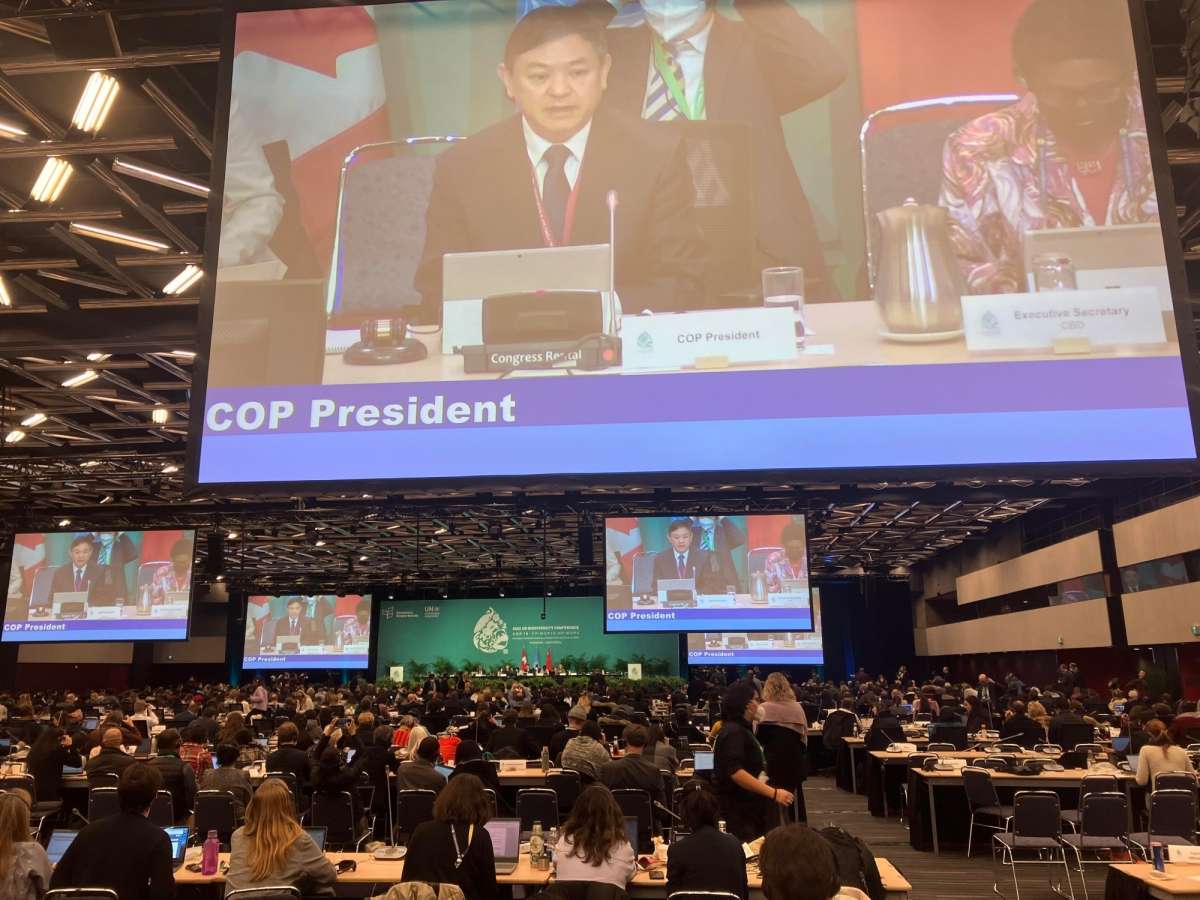The urgency of the environmental crisis does not end with the signing of the framework, said IIFB…reports Vishal Gulati
Following two weeks of often tense negotiations of the Kunming-Montreal Global Biodiversity Framework (GBF), in Montreal, Canada, the International Indigenous Forum on Biodiversity (IIFB) praised the text for its “strong language on respect for the rights of indigenous people and local communities”.
In a statement to the closing plenary of the meeting on Monday, the IIFB said: “The IIFB celebrates the timely recognition of indigenous people and local communities’ contributions, roles, rights and responsibilities to mother earth in the Kunming-Montreal Global Biodiversity Framework (GBF).”
“We have spoken and you have heard us, let us now put those words into action.”
“Let us move swiftly towards implementation, build meaningful partnerships, and ensure adequate and direct access of indigenous people and local communities to resources to ensure that we achieve the ambition set out in this framework.”
Speaking on the final day of the meeting, Co-Chair of the IIFB, Lucy Mulenkei from Kenya, said, “Indigenous people and local communities are happy that finally we are here. With most of the recommendations that we had submitted and negotiated already reflected. We leave Montreal happy and ready for the implementation journey. We are glad we never gave up even when times were tough.”
“We still have a journey, a journey that indigenous people and local communities have always taken. We will move forward to ensure the implementation of the GBF is a success,” she added.
The urgency of the environmental crisis does not end with the signing of the framework, said IIFB.
“We must work quickly and efficiently for its implementation,” said Lakpa Nuri Sherpa, IIFB Co-Chair from Nepal, delivering the IIFB’s closing statement.
“From the depths of our territories, our ancestors and authorities are urging serious actions to protect our mother earth and all life, together with us,” he added.
“The voices of indigenous people are the voice of nature,” said Viacheslav Shadrin, Chief of the Yukagir Indigenous People from Russian Arctic.
“It’s historic. It’s a moment to celebrate,” said Jennifer Tauli Corpuz, an IIFB representative from the Kankana-ey Igorot People of Mountain Province in the Philippines.
Viviana Figueroa, from the Omaguaca-Kolla people in Argentina, speaking on behalf of IIFB, said “they are recognising that indigenous people can also make contributions to biodiversity conservation”.
“For us, it’s a major shift — they are recognising this important role that was invisible,” she added.
She particularly welcomed the inclusion of indigenous rights into Target 3 on protecting one- third of the world’s ocean and land territory (the ’30×30′ target).
The Kunming-Montreal GBF recognises the integrity and distinct nature of the lands, territories and resources of indigenous people and local communities, and their full and equitable participation in decision-making towards implementing the framework.


